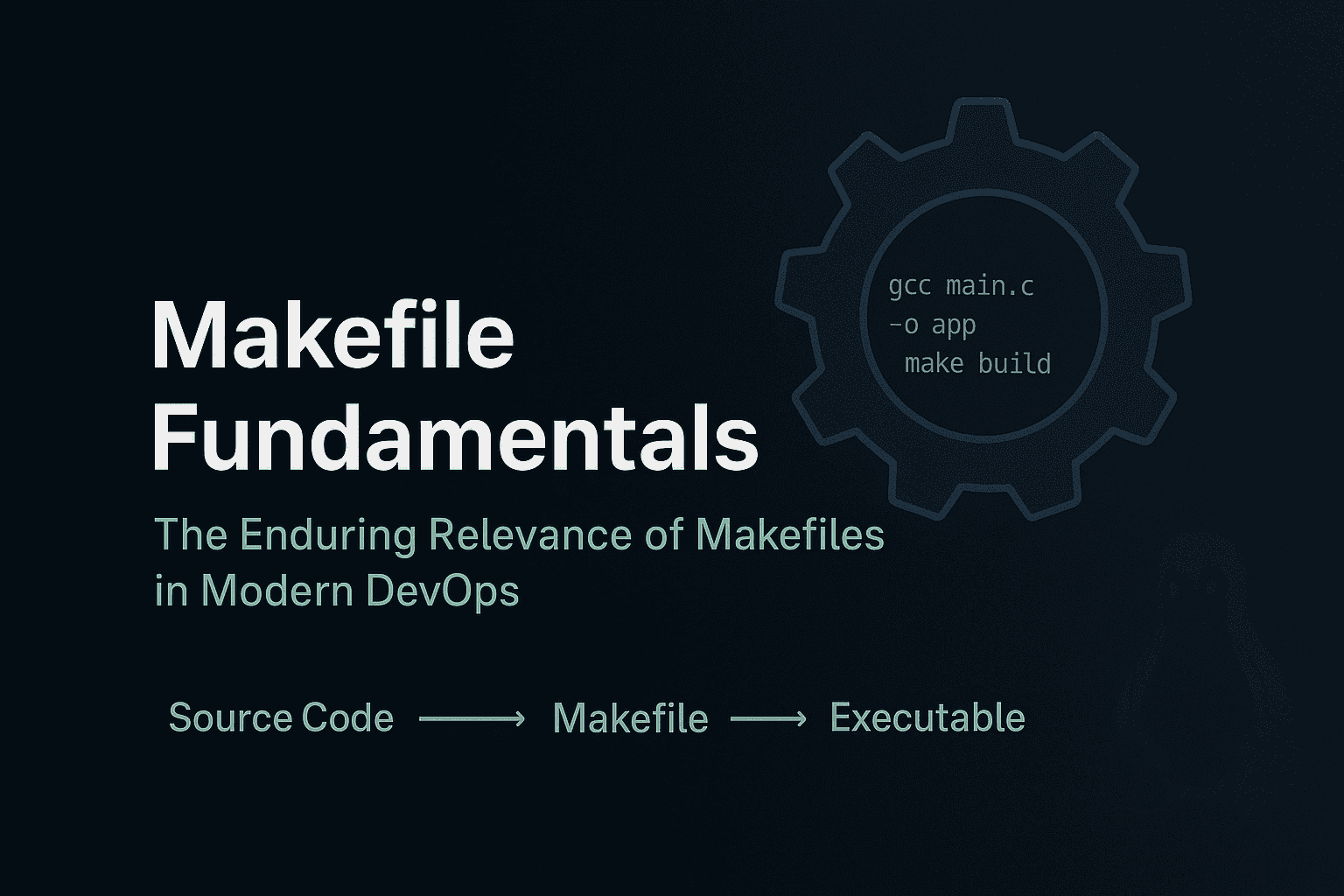Introduction
A Makefile is a configuration file used by the make build automation tool to define how software projects are compiled, built, and managed. It contains a set of rules, dependencies, and commands that describe the workflow of transforming source code into executable programs or other targets.
At its core, a Makefile provides:
- Targets – The file or action to be generated (e.g.,
program,clean). - Dependencies – Files that the target relies on (e.g.,
.cor.hfiles). - Commands – The shell instructions executed to produce the target.
This allows engineers to automate repetitive tasks, optimize builds, and maintain consistent workflows across environments.
Brief History
The concept of make originated in 1976 at Bell Labs, developed by Stuart Feldman. It was created to solve a simple but time-consuming problem: rebuilding only the parts of a program that had changed rather than recompiling everything.
Over the years, make evolved into a standard tool across Unix systems. Today, GNU Make is the most widely used implementation, still maintaining backward compatibility while supporting powerful extensions.
Purpose of Makefiles
The primary goals of a Makefile are:
- Automation – Define once, execute repeatedly.
- Efficiency – Rebuild only what’s necessary.
- Portability – Standardize build instructions across systems.
- Maintainability – Keep build logic in a centralized, readable format.
Installing make on Linux
If the make command is not available, you can install it using your distribution’s package manager.
# Debian / Ubuntu sudo apt update sudo apt install make # Fedora / RHEL / CentOS sudo dnf install make # For older RHEL/CentOS systems that still use yum: sudo yum install make # On some minimal RHEL-based systems, you may also need: sudo dnf groupinstall "Development Tools" # Quick check after installation: make --version
Demo – Automating Multiple Tasks
📌 Purpose: Show that Makefiles aren’t just for code — they can organize everyday workflows
Makefile
hello: echo "👋 Hello, User!" date: date clean: rm -f *.log echo "🧹 Cleanup done!"
How to run:
make hello # Prints a greeting make date # Shows today’s date make clean # Cleans up log files
What happens: Instead of memorizing multiple commands, you organize them into a Makefile — like a shortcut menu for your daily tasks.
Use Cases
- Software Compilation – Building C, C++, or Go projects efficiently.
- Infrastructure Tasks – Automating repetitive sysadmin workflows (e.g., Docker image builds, Kubernetes manifests).
- CI/CD Pipelines – Integrating Makefiles into Jenkins, GitLab CI, or GitHub Actions.
- DevOps Projects – Managing linting, testing, packaging, and deployment commands in a structured way.
- Documentation Automation – Generating PDFs, HTML, or static site builds.
Security Concerns
Like any automation tool, Makefiles can introduce risks if not managed properly:
- Arbitrary Command Execution – A malicious Makefile can execute dangerous system commands.
- Supply Chain Attacks – Compromised dependencies or included scripts can lead to compromised builds.
- Privilege Escalation – Running
makewithsudocan unintentionally execute harmful commands. - Hidden Backdoors – Complex Makefiles may hide unsafe behaviors in less-reviewed targets.
Best Practices:
- Review Makefiles from third parties before use.
- Avoid running
makeas root. - Keep build environments isolated (e.g., containers).
- Use CI/CD security scanning tools to audit Makefiles.
Q&A Section
Q: Do I need a Makefile for every project?
A: Not necessarily. Small scripts may not require one, but for multi-file or team projects, Makefiles ensure consistency and automation.
Q: Can Makefiles be used outside of C/C++ projects?
A: Yes. Modern DevOps workflows use Makefiles for Python, Go, Docker, Terraform, and even documentation pipelines.
Q: What’s the difference between Make and CMake?
A: Make executes rules defined in a Makefile, while CMake generates Makefiles (or other build scripts) dynamically. CMake is higher-level, whereas Make is the execution engine.
Q: Are Makefiles still relevant today?
A: Absolutely. Despite newer tools like Bazel, Ninja, or Gradle, Makefiles remain widely used due to their simplicity, portability, and integration into Unix environments.
Final Thoughts
Makefiles are one of the oldest yet most enduring tools in the software engineering and DevOps world. Their simplicity, power, and adaptability make them essential for IT professionals who want to automate builds, streamline workflows, and enforce consistency across environments.
For security-minded engineers, Makefiles also highlight the importance of trust and review when it comes to automation scripts. Whether you’re compiling code, managing containers, or orchestrating deployments, a solid understanding of Makefile fundamentals remains a valuable skill in any IT professional’s toolkit.




